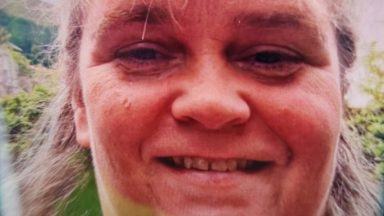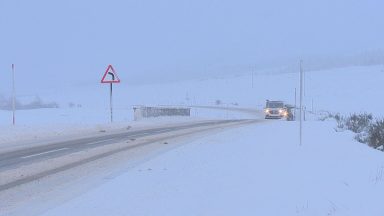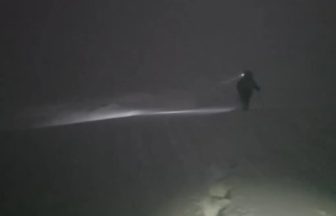The last entry noted by the three keepers at Flannan Isles lighthouse was on December 15, 1900.
Days later, a relief vessel discovered the building on Eilean Mòr in a state of disarray with its three keepers nowhere to be found.
Nearly 123 years later, the enduring mystery of what happened to Thomas Marshall, James Ducat and Donald MacArthur continues to capture the imagination of the public.
For the first time, records from the lighthouse have been released to the public as part of a new bundle of documents published by the National Records of Scotland (NRS).
But they do little to unravel the murky circumstances around the trio’s disappearance.
Were the lighthouse keepers swept away? Or did something darker take place that night?
The discovery
The disappearance was first discovered when the steamer Anchor noted in its log that the light was not working in bad weather conditions.
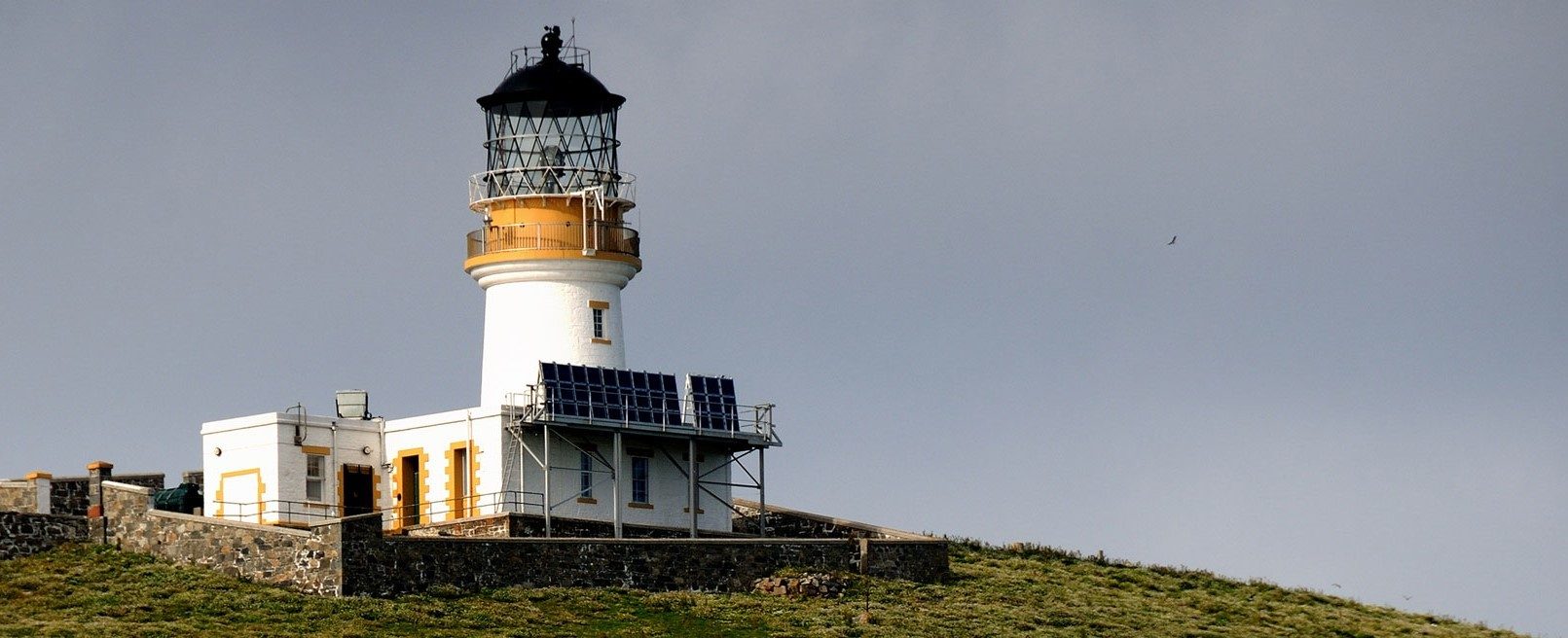 Northern Lighthouse Board
Northern Lighthouse BoardOn Boxing Day, the relief vessel Hesperus arrived for a routine visit, but uncovered a scene of chaos.
The ship’s master, Captain Harvey, reported that were was “no sign of life” visible on the remote island, and he had not received a response to a rocket fired.
Relieving keeper, Joseph Moore, went up to the lighthouse but found no one there.
Time stood still
The door to the lighthouse was unlocked and in the entrance hall, two of the three oilskin coats belonging to Thomas Marshall, James Ducat, and Donald McArthur were gone.
In the kitchen, Moore found half-eaten food and an overturned chair, looking as if whatever had befallen the keepers had come suddenly.
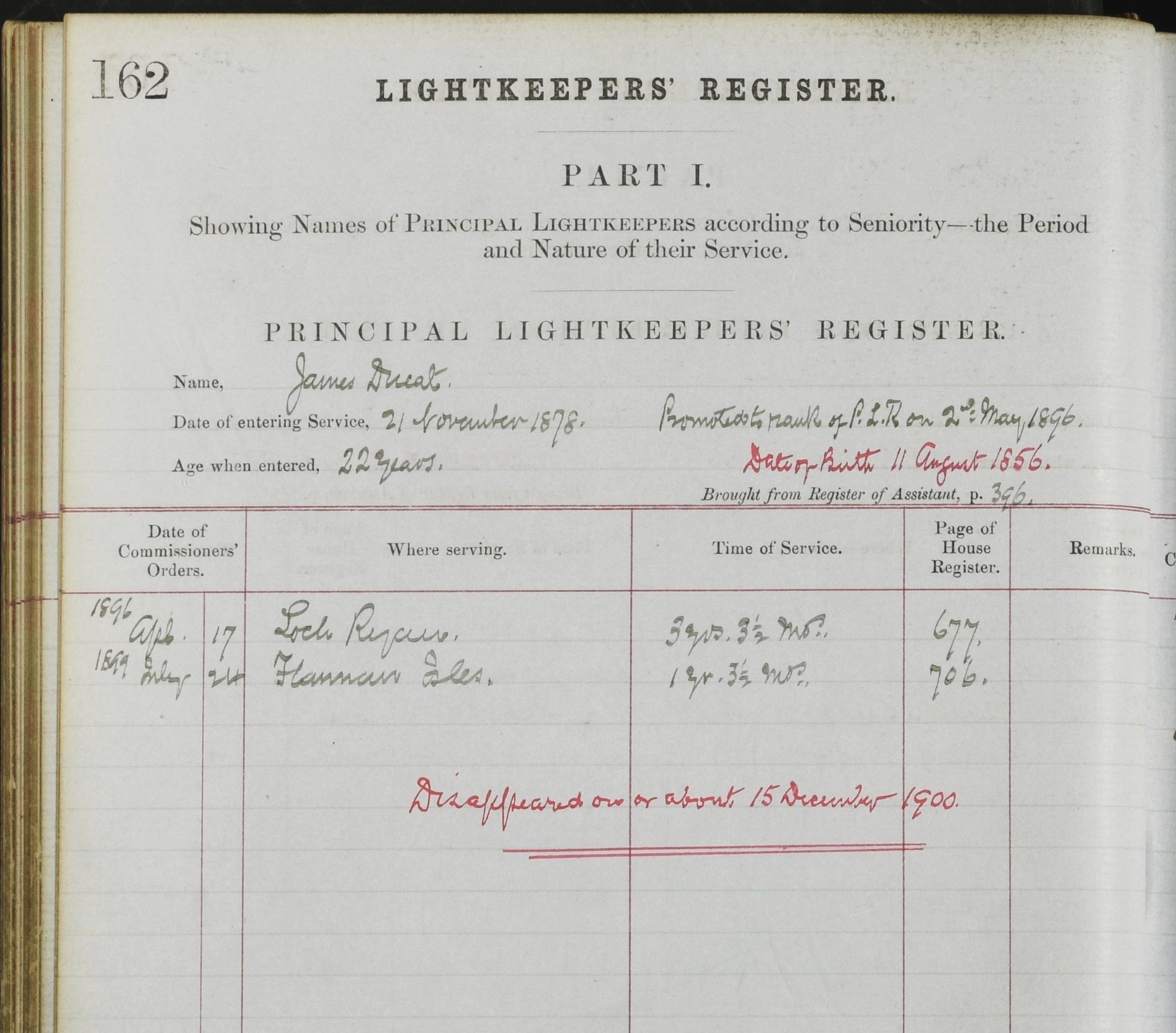 NRS
NRSTo add to this peculiar scene, the kitchen clock had also stopped working.
The disappearance was immediately investigated, and it was concluded that due to the very bad weather on the island, the men must have left the lighthouse for some purpose or other, been caught by an unexpected large roller and swept into the sea.
But no bodies were ever found.
Foreign spies and ghost pirates
To this day, no one knows what took place in the lighthouse that night – but many theories have developed over the years.
James Ducat, 43, Donald MacArthur, 40, and Thomas Marshall, 28, were some of Eilean Mòr’s first lighthouse keepers after the Flannan Isles lighthouse was completed in 1899.
At the time of their disappearance, the trio were the sole inhabitants of the island.
Despite months of investigation, no trace was ever found of the three men who left two widows and six children behind.
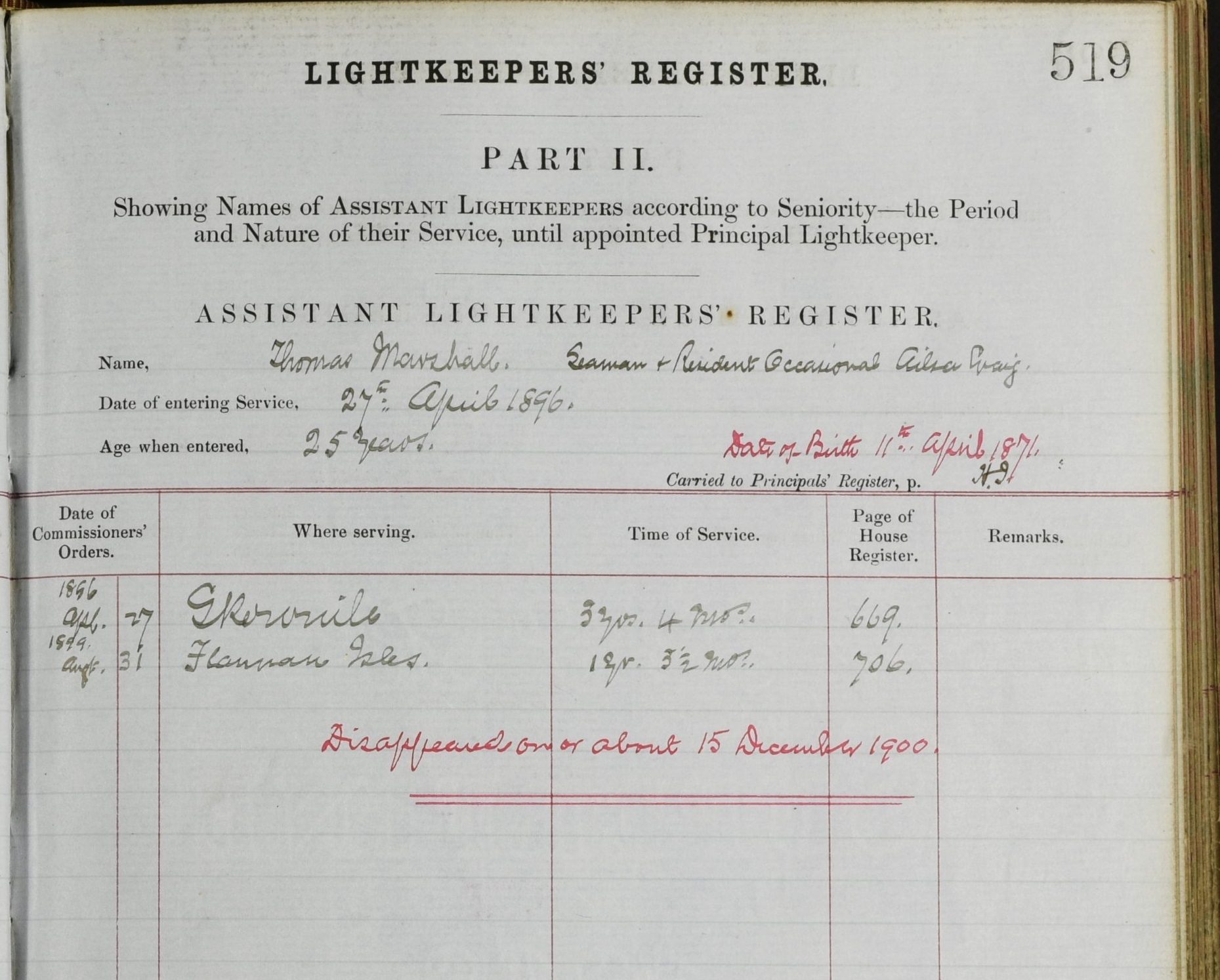 NRS
NRSOne popular theory at the time was that one keeper had murdered the other two before throwing himself into the sea in remorse.
MacArthur was apparently known to be violent and detested his posting on the island, though this has never been proven.
Some reports suggest that logs leading up to the disappearance included strange entries, with descriptions of an awful storm, high winds, and low spirits amongst the keepers.
In one, on December 12, Marshall writes that there were “severe winds the likes of which I have never seen before in twenty years”.
He is also said to have reported that Ducat had been “very quiet” and MacArthur had been crying.
‘God is over all’
Logs from December 13 were said to have stated that the storm was still raging, and that all three men had been praying.
The final log entry is said to have been made on 15 December, stating “storm ended, sea calm. God is over all”.
There were, however, no reports of storms in the area in the days leading up to the disappearance – meaning the poor weather conditions recorded in the log were either made up, or localised.
Several implausible stories also ensued, such as that a sea serpent – or a giant seabird – had carried the men away, or that they had arranged for a ship to take them away and start new lives.
Abduction by foreign spies was also suggested, while others blamed a boat filled with ghost pirates.
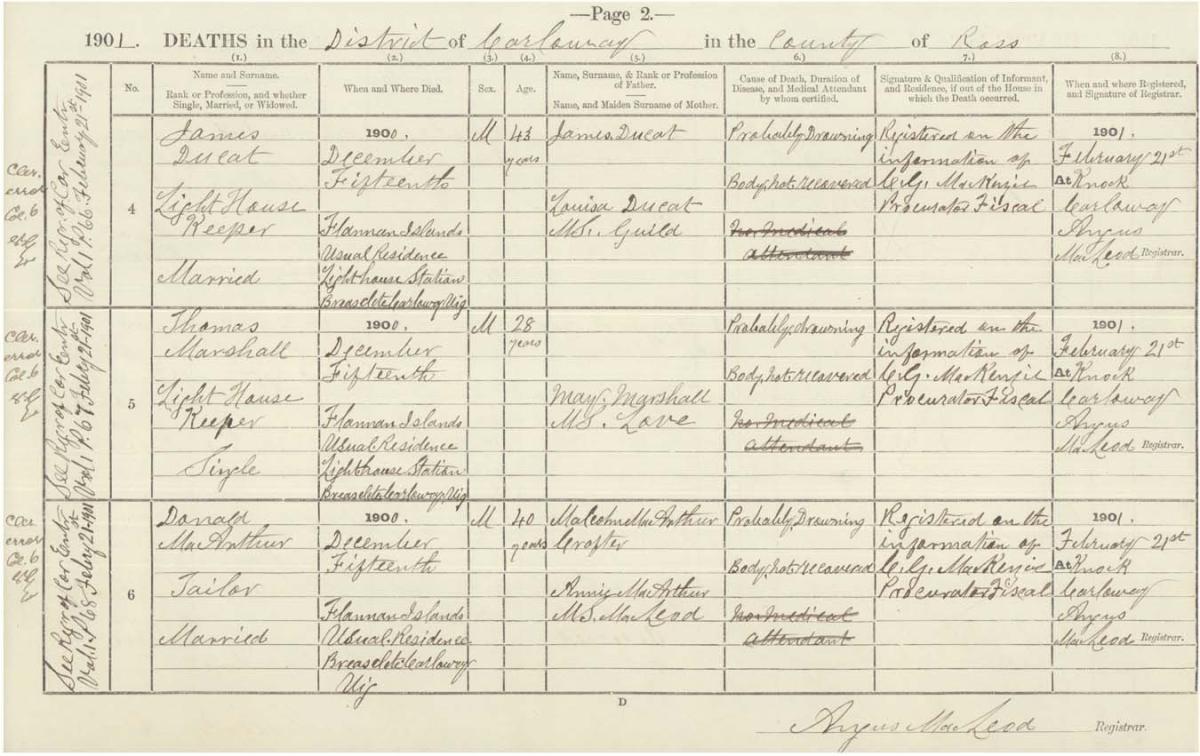 NRS
NRSNo one knows exactly what took place that day at the Flannan Isles, nevertheless, the tale has never lost its ability to captivate.
It has inspired songs, an opera and and a poem by Wilfrid Wilson Gibson in 1912 – more recently, in 2019, the tale of the Flannan Isles lighthouse keepers was the subject of the film The Vanishing, starring Gerard Butler and Peter Mullan.
‘The lives of lightkeepers’
On Thursday, NRS announced that employment records of more than one thousand keepers are now available online for the first time on genealogy website ScotlandsPeople.
Over 2,000 new scanned images of the records of the Northern Lighthouse Board give details of over 1,300 lightkeepers working in 92 lighthouses between 1837 and 1921.
Lightkeepers had hard working lives: long days and nights maintaining light and fog signals, as well as cleaning and ensuring the upkeep of their isolated stations in harsh conditions.
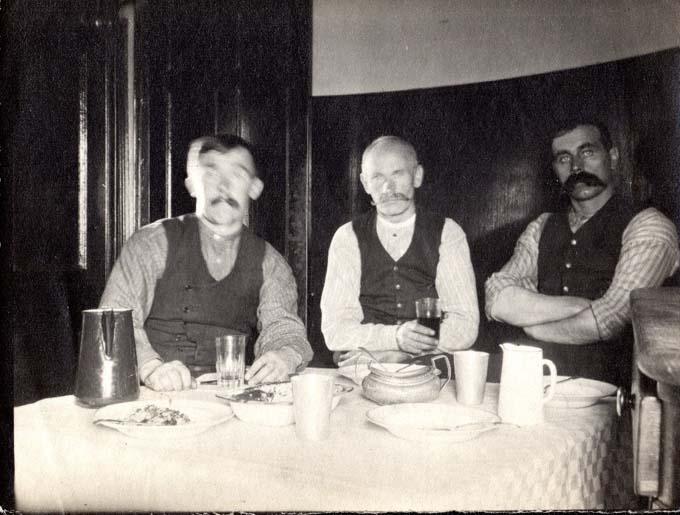 NRS
NRSMany keepers lived in cramped spaces for long periods, often with only basic washing facilities or toilets.
They could be isolated from family and friends while they did their crucial work maintaining the safety of shipping around the Scottish coast.
The records cover all of Scotland, from Muckle Flugga near Shetland to the most southerly at Drumore, Mull of Galloway. They also include Bell Rock, the world’s oldest working sea-washed lighthouse, and the three keepers of the Flannan Isles who disappeared following a storm in 1900, presumed drowned.
Jocelyn Grant, NRS Outreach and Learning archivist, said: “The last lighthouse was automated in 1998 and these records shine a light on the working lives of over 1,300 men in a profession that has now mostly passed into history.
“The Northern Lighthouse Board records are frequently requested by visitors to our buildings. If your ancestor worked in a Scottish lighthouse, there’s a good chance you will find them here.”
Follow STV News on WhatsApp
Scan the QR code on your mobile device for all the latest news from around the country






